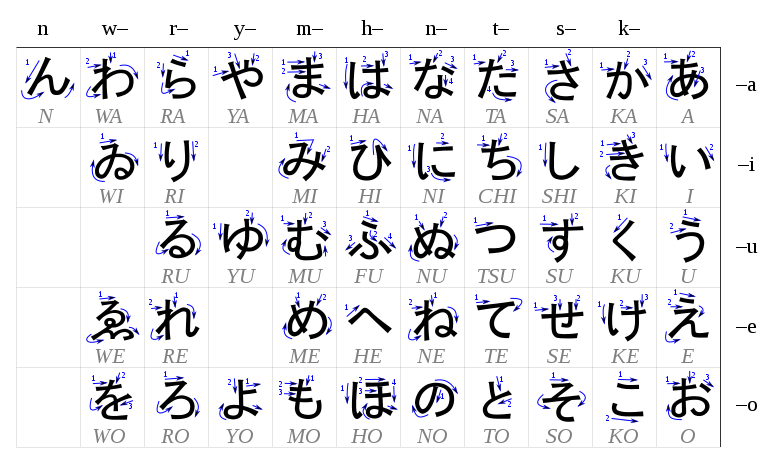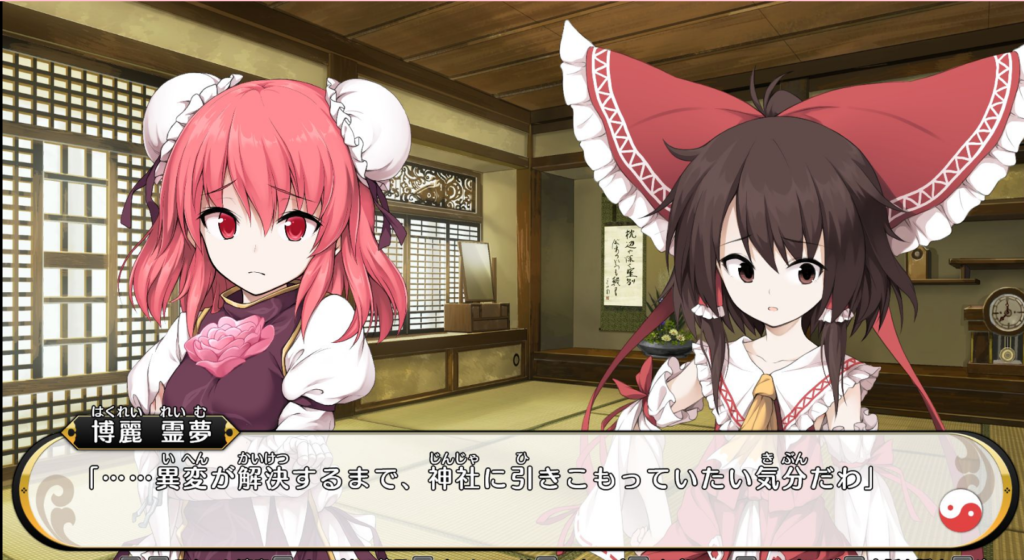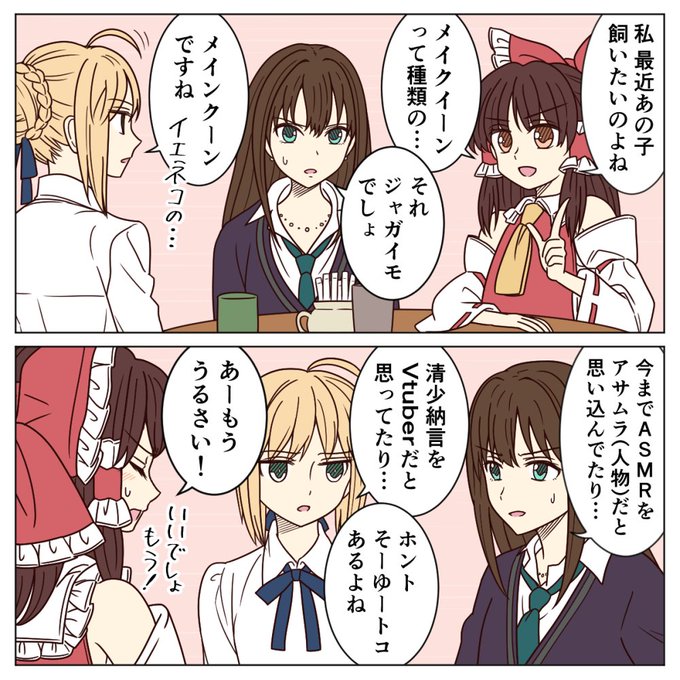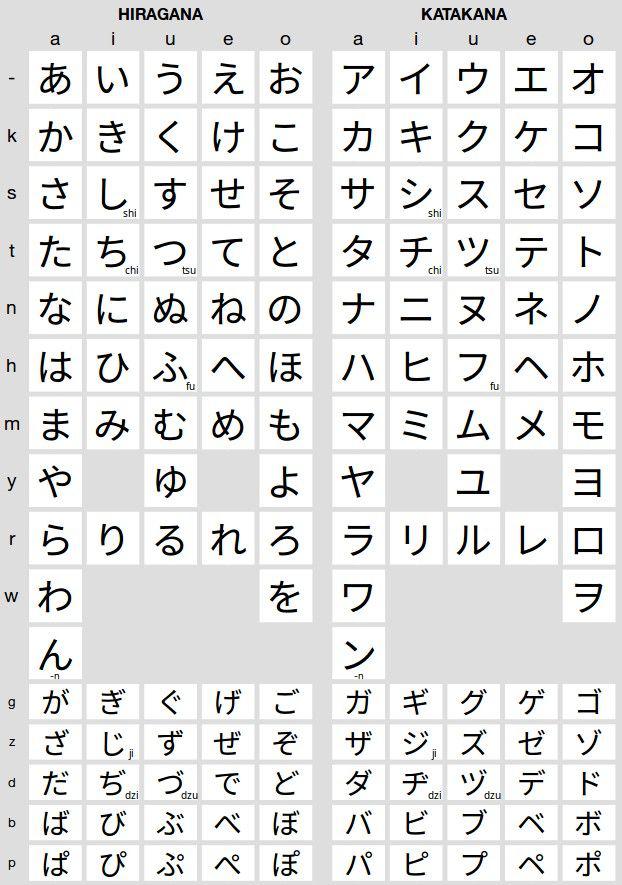Rules of the game
This part will be here in every lesson. It reminds you of all the conventions I will be using on the page, and their meaning.
Every word links to a jisho.org page. Just click the word!
So what do you need to begin ?
There are two japanese alphabets. Namely, Hiragana (あ) and Katakana (ア), you could say they look a bit like lower case and UPPER CASE, although they are normally used quite differently.
And there’s also Kanji, these famous chinese characters (漢字 = Chinese characters), that are ideas, concepts, sometimes words. Needless to say, you will pronounce these kanji, chinese characters, with the japanese phonetic alphabet, Hiragana and Katakana.
Yes. Hiragana and Katakana are phonetic alphabets, probably the easiest alphabets of all the languages. Together, they are called Kana. They are purely phonetic, with only 2 characters as exceptions (は and を). And yes, you will first have to learn them. It’s not hard. Besides, if you really can’t wait to go reading, you can skip Katakana, and then come back to do them later. But you HAVE to AT LEAST know how to READ Hiragana :

A like Array ; I like Sit ; U like Full ; E like Bell ; O like Cold ; K like Kart ; S like Sweet ;
T like Teach ; N like Nice ; H like Hot ; M like Mouse ; Y like Yes
R like … List ? ; W like What
Yes, R is… not your sweet british english R. You found redemption if you ever tried learning Spanish. If not, like any other sound, don’t worry ! You will get used to it after hearing it a lot.
As you can see, the array is « weird ». You’re right !
In fact, there are two ways to read japanese.
Like a normal human being, left to right and then up to down.

And like a japanese madman, from up to down, and then right to left.

There, it’s written like a japanese traditional « madman » way. I know you’re scared. You don’t have to, this writing is becoming less and less common, japanese starts to write more and more frequently from left to right. And it’s not much different either way, if you can read normally, you will also be able to read it the manga way.
So, japanese characters from the alphabet are composed of a consonant (or not, for the first column) and then a vowel. Ka. No. Ri. That’s it. No additive. No magic powder. And, as you can see, there aren’t many of them. 48. In fact, there are a few more, but you can get them from this basis. If you can read them, you’re golden.
Well… If you look close, on some columns, the consonant changes a bit. Shi, not si ; Chi, not ti ; Tsu, not tu ; Fu, not Hu (It’s in fact a mix of Hu and Fu). But I have something up my sleeve to make you forgive my lie : another lie ! There are currently 46, not 48, Hiragana. Wi and We don’t exist in japanese anymore. Do you forgive me now ? No ? Then how about I tell you that, in truth, the wo (を) has only one use in japanese, so there are only 45 Hiragana used for japanese words ? Thank you. I knew you would be understanding.
The kanji problem
With these characters, you can read words, even those with kanji. Kanji have quite consistent readings. There are 2 families of ways to read kanji :
くんよみ (Or sometimes simply くん) : The japanese way. Most kanji don’t have many くん, and they also form a word themselves alone. Example 家 : いえ : meaning « house »
And :
おんよみ (Or sometimes simply おん) : The chinese way (litterally the « sound way »). A lot of kanji have plenty of おん, and they most likely make a word grouped with other kanji. Example with the same kanji : 空手家 : からてか meaning someone who practices karate.
(I’m not transfering words into the roman alphabet. That’s for your sake. Take the array, Look for each character. Rebuild the word yourself. I promise you : This is one of the FASTEST way to learn the array. And you acquire good practices)
I already told you before, and I’m sure you noticed by now. Kanji have links on them. Why ? I had to find a compromise between 1) making you try to remember the reading of a kanji, by not showing the word’s definitions and readings at all ; or 2) making my lesson more fluid by showing it everytime. The compromise I found is : Every. Single. Word. With. Kanji. Links. To. Jisho. Dictionnary. Every kanji word on this website. Convenient, right ? I’m sure you’ll come to like it.
So. are we finally over with japanese sounds ?
Well…. No. As I said before, you can have « signs » added to Hiragana (as well as on Katakana), to change the sound produced a little. There are two types of them.
だくてん (Dakuten, with a D) : Make the sound with the mouth more closed
はんだくてん (Handakuten) : Make the sound more explosive
So what do we get with these new things ?

We get this. This is all the Hiragana and Katakana you will ever find.
Dakuten are the 2 little strokes at the up right corner of the kanji. It transforms
K into G like Goal
S into Z like Zebra
T into D like D… Doctor (pfew…)
H into B like B…. Ball !
Handakuten is the circle at the exact same position. It transforms
H into P like Peach (SAFE)
Well, you asked some spicy sauce of exceptional taste. So here are your exceptions.
じ is not Zi but it is Ji.
ぢ is not Di but it is Ji (What?)
づ is not Du but it is Zu
Why do we have 2 Ji ??? Heck if I know. Thankfully, these last two exceptions are very rarely used characters in japanese. If you only want to learn じas Ji, I promise you’ll be fine.
Is this over ?
There’s… one more thing. You see this Y line ? They exist as miniature toys :
や => ゃ ; ゆ => ゅ ; よ => ょ
What do they do ? Simple. They are sticked to the I column of Hiragana, and replace the voyel with their own sound. み : Mi becomes みゃ Mya ; き : ki becomes きょ kyo, and so on
Slight difference with し and ち : しょ and ちょ which become respectively Sho and Cho, and same for し and ち with ゃ and ゅ, because it was hard to pronounce without it.
Are we FINALLY done ?
For the sounds, yes. But they are 2 changes in the length of the sound.
Making the sound longer :
う after a お lenghtens the O. のう : Nooooooo ! (it doubles the length)
いafter a え lenghtens the E. べい : Beeeeeee !
Note that this also works with ょ when it replaces the original い sound : きょう = kyoo,
Marking a pause :
In english, you know doubling : in Apply, the p is slightly longer than a normal p.
In japanese, the same thing exist, but it’s amplified. It is made by adding a っ “a little つ”,BEFORE the doubled consonant :
せっぷく (a suicide in old japanese) is not p, it’s a pp, a longer p.
OVER ?????
Calm down ! Yes, it’s over. You can now pronounce every possible word in japanese. If you still have doubts, don’t worry. You will listen to them over and over, encounter them over and over… You will have more opportunities to work on them than to brush your teeth.
Now how to learn them ?
Well, this depends on you. A lot of people have to write them to remember them. A lot of people carry a Hiragana memo until they don’t need them anymore. A lot of people use Anki flashcards to remember them. (Most japanese learners use Anki at some point in their studies. I cover it later in one of my courses, but you can still look for it on your own. Very useful tool)
My advice ? Try them one by one, and believe your feelings. Does it feel like you are progressing ? Do you feel like you are forcing yourself ? Is it hard to find motivation to work on them ? You will learn faster if you learn the way you are confident in. You know yourself better than others. When you learn alone, the limit is the sky !
You won’t go through all of this with all of the kanjis you meet. Japanese people themselves know you cannot possibly know every reading of kanjis, so they put up in place a stratagem. How about we write the spelling of kanjis up on them? That’s exactly what they did, and it’s called ふりがな. You will love them. You will love every game, every manga that has them. Most dictionaries have them. It gives this :

A lot of people give up on japanese at this stage. Why so early ? Because they tried something. It didn’t work out for them. They failed ! But, as I said, failing is not the problem. The truth is that everybody eventually fails at learning japanese. The problem is you against failure. You don’t have to let it hurt you. Bounce back, try something different, something that looks more like you. You will grow up and learn about yourself. About what works for you. About who you are. About what you really want to get from learning.
If you’ve read this far, you are on your way. And I can already say that I like you. I still have a lot of things to teach you about japanese. Not for you to learn, but for you to make yours. You don’t have to believe everything I say, and it’s quite the opposite in fact. I want you to be critical about what I teach you. You will probably have smarter ideas than me, some better representation of japanese construction. And if you do, believe yourself, not me. Thank you, and keep going for the next lessons !